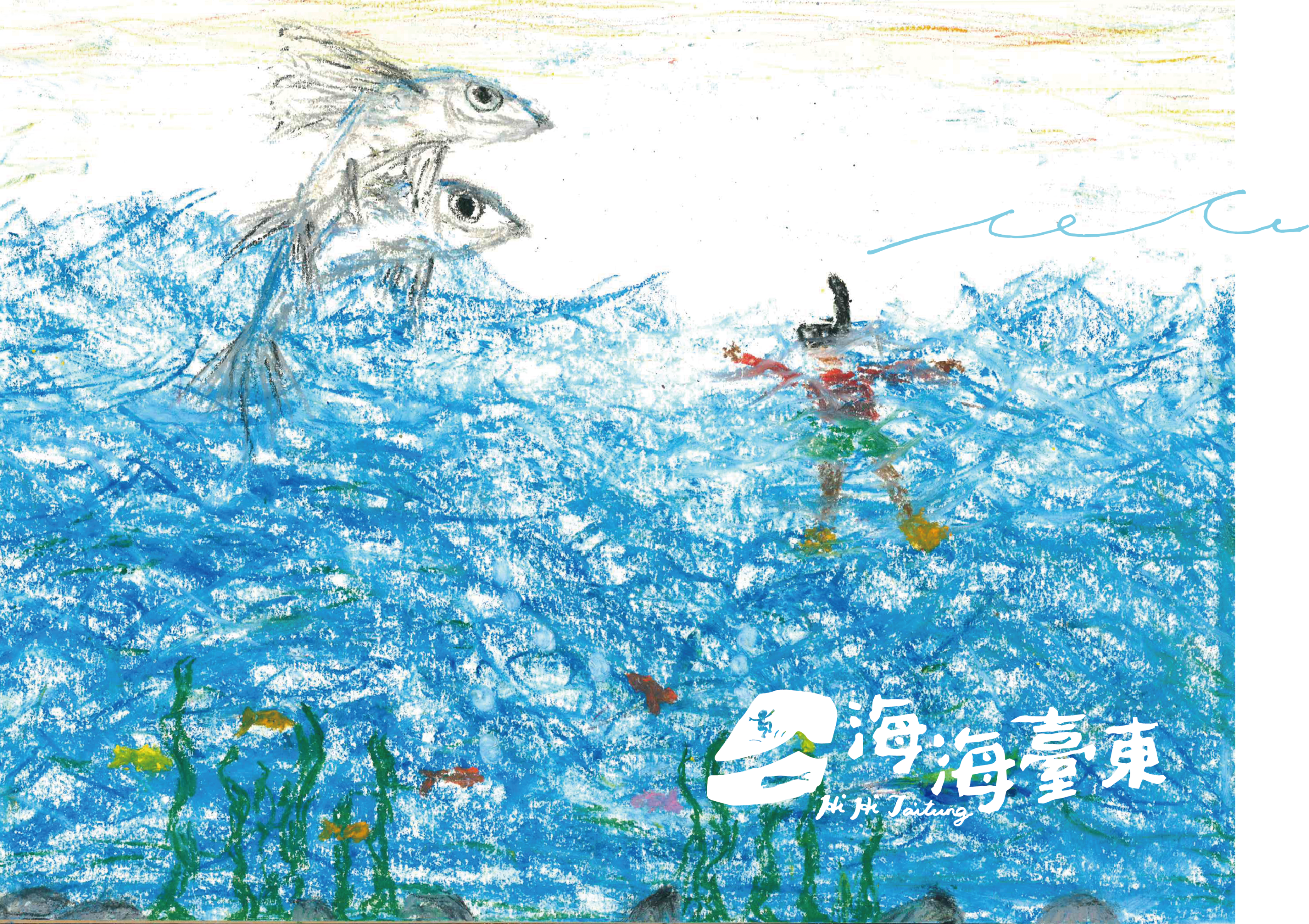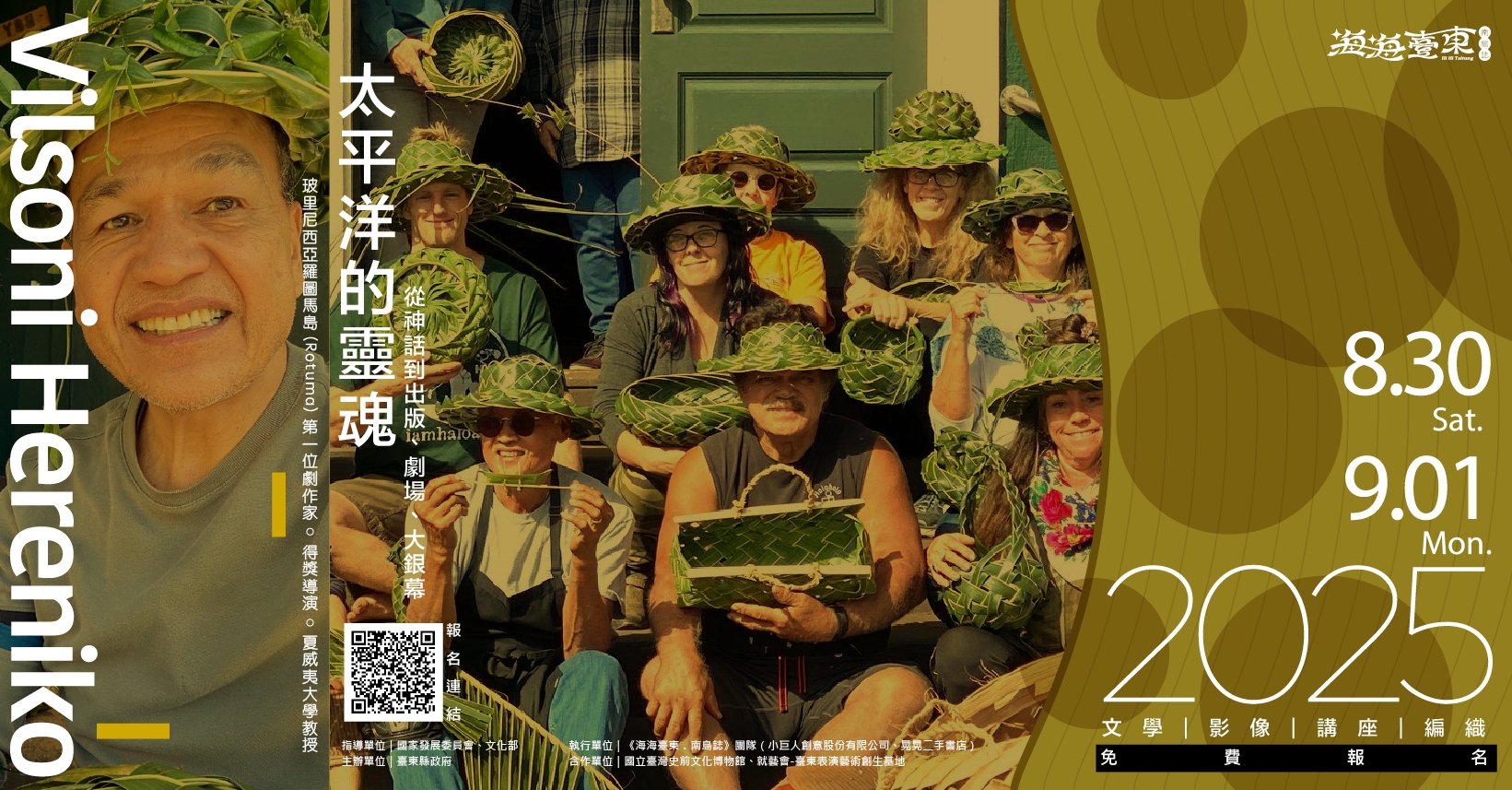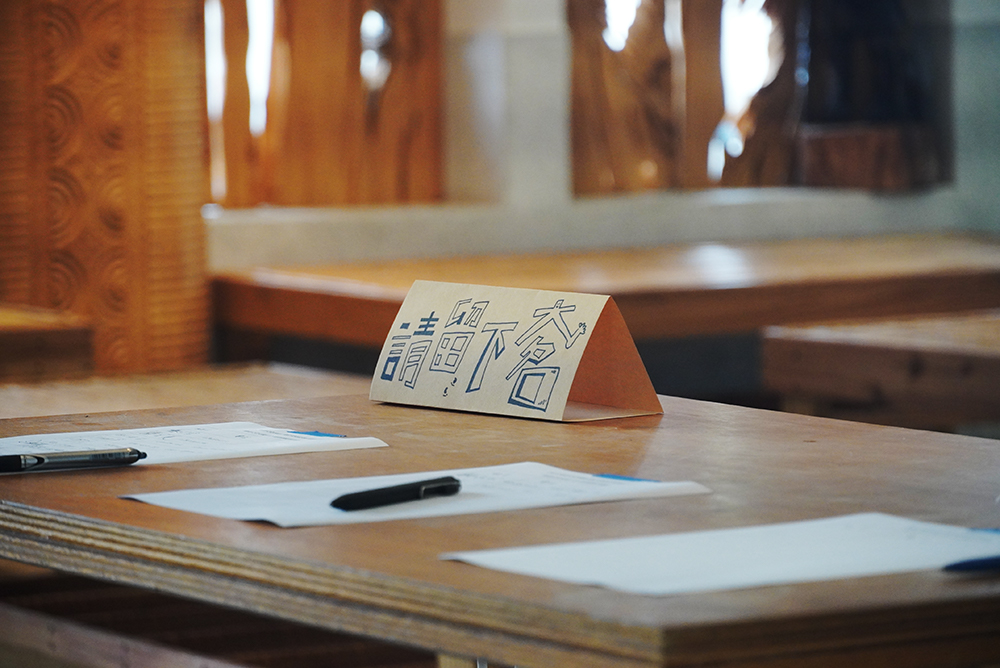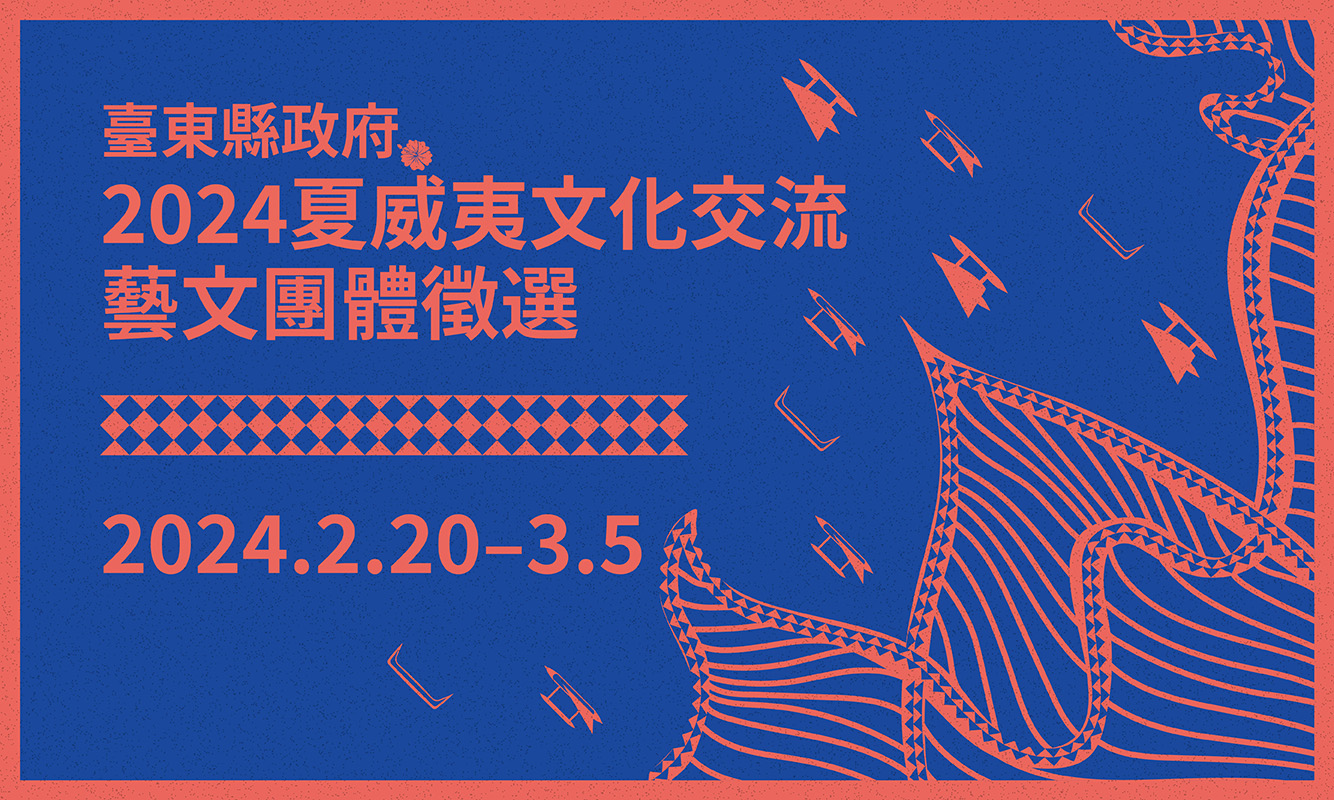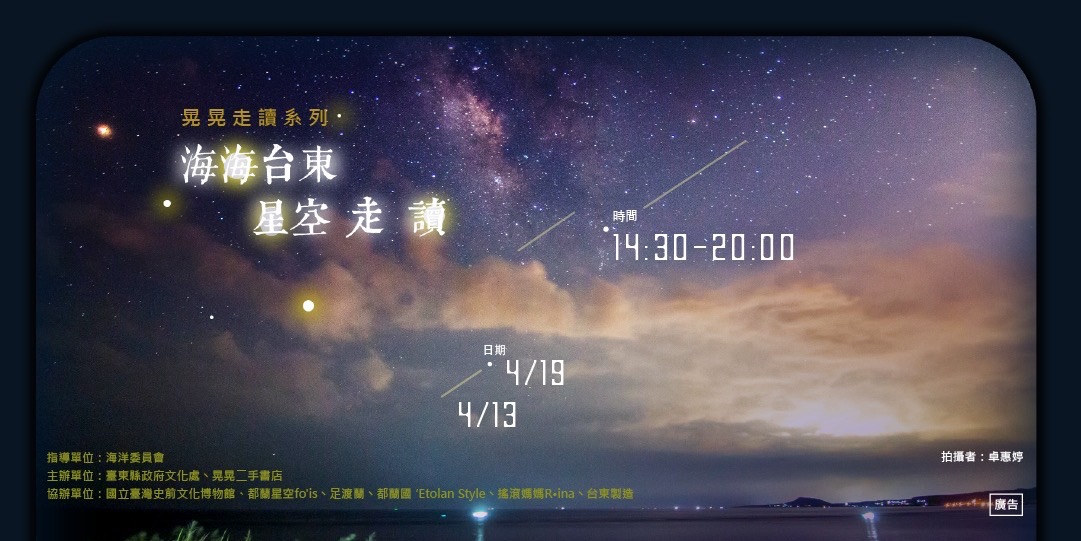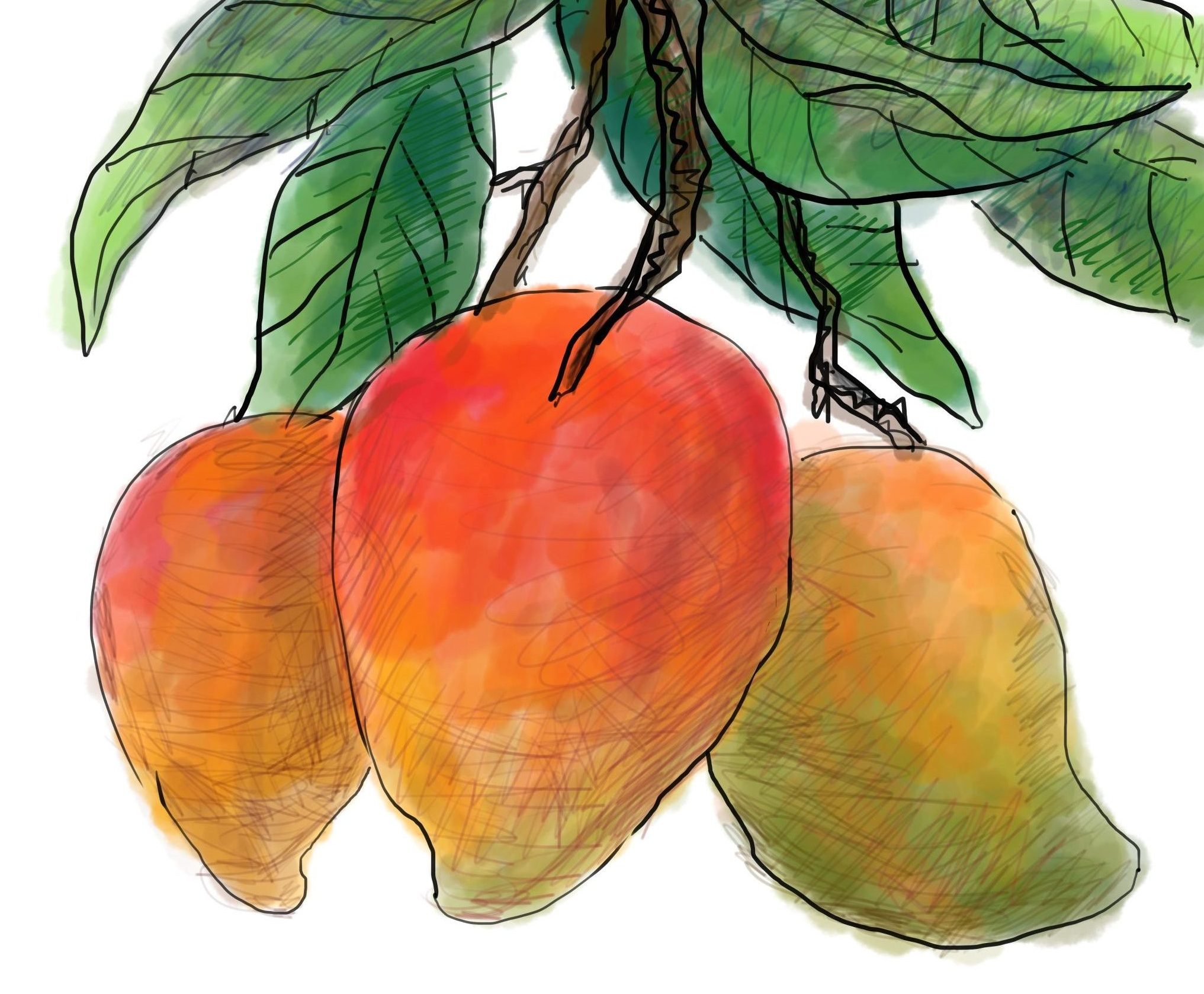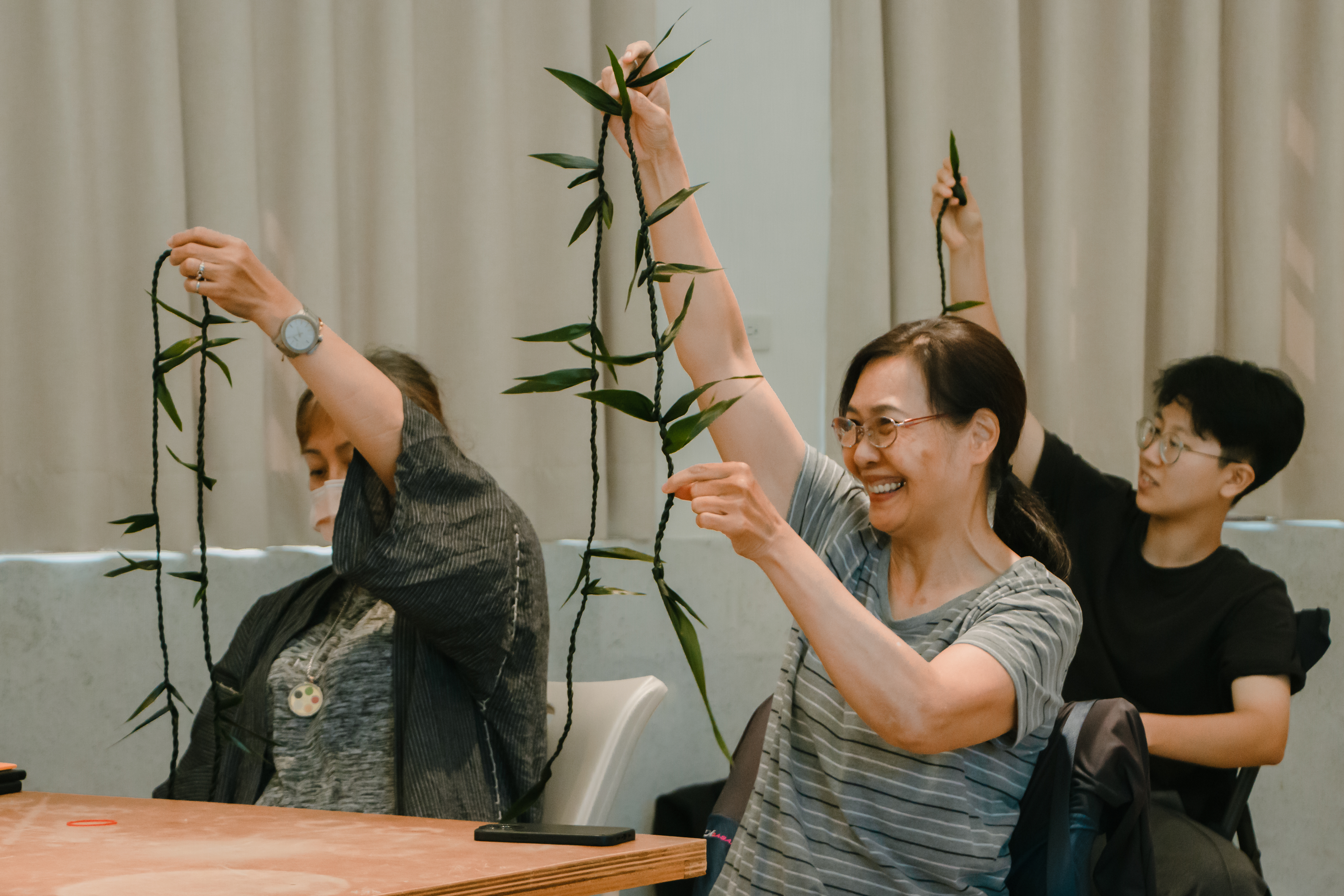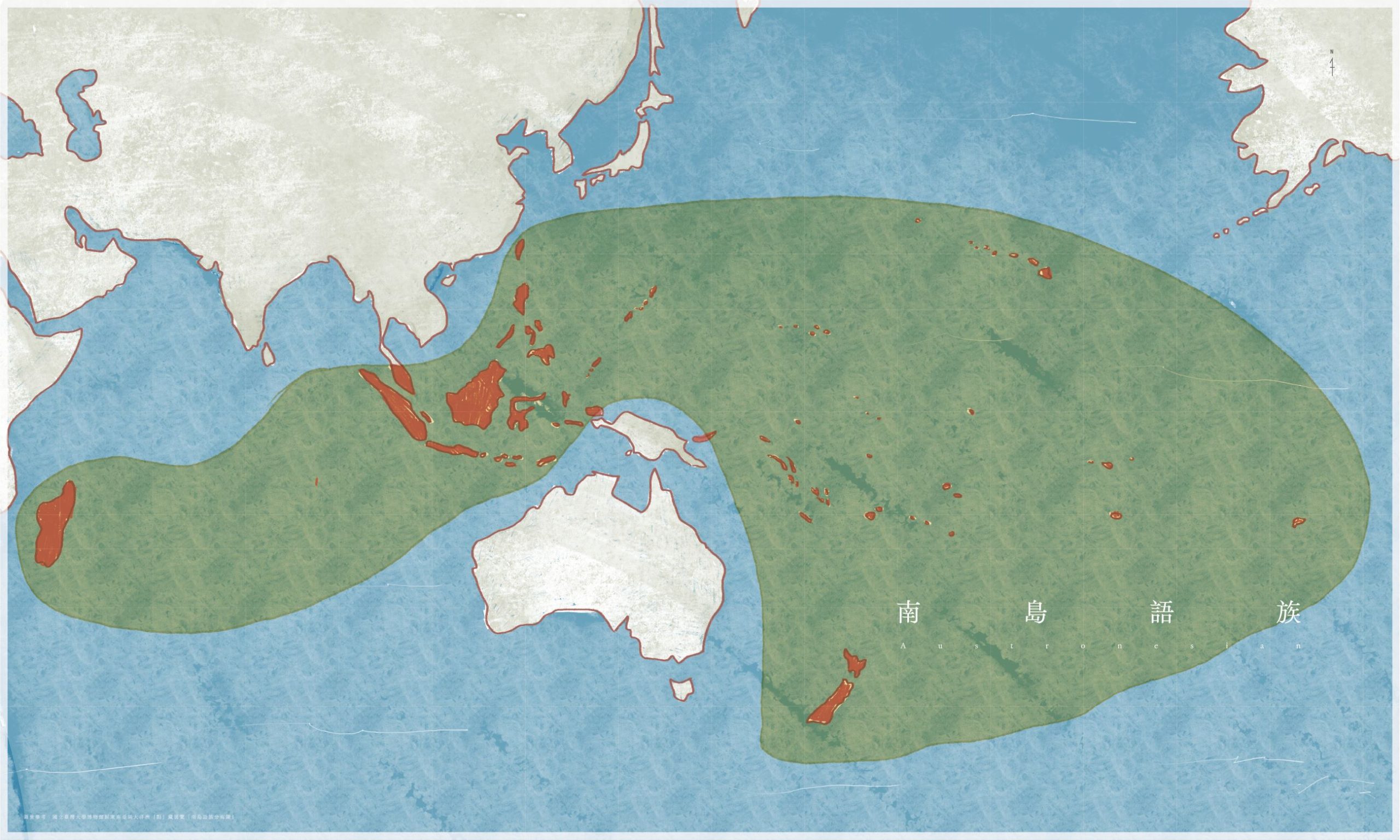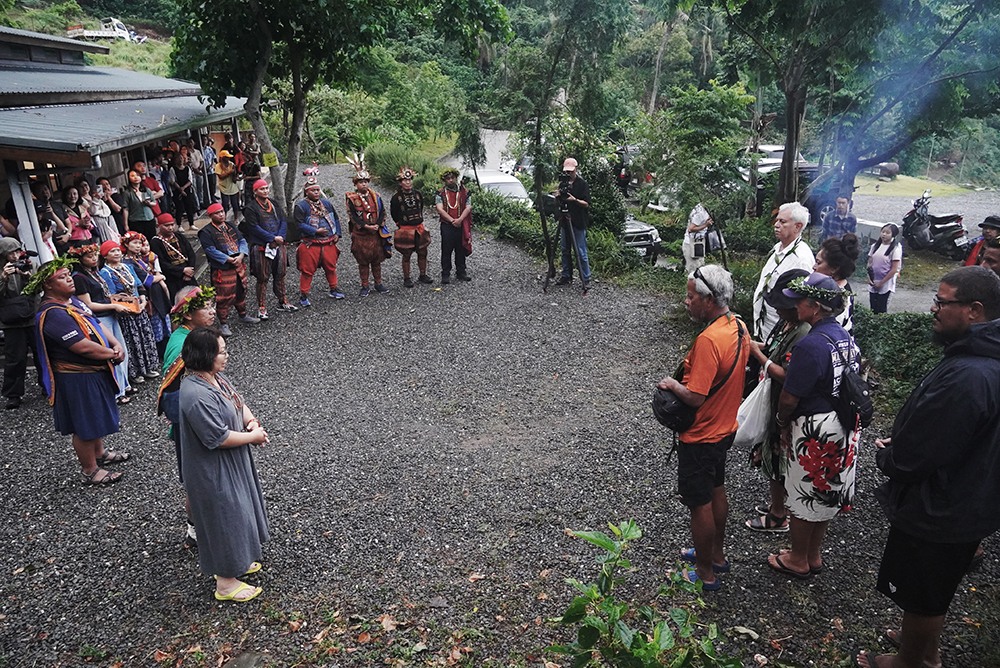

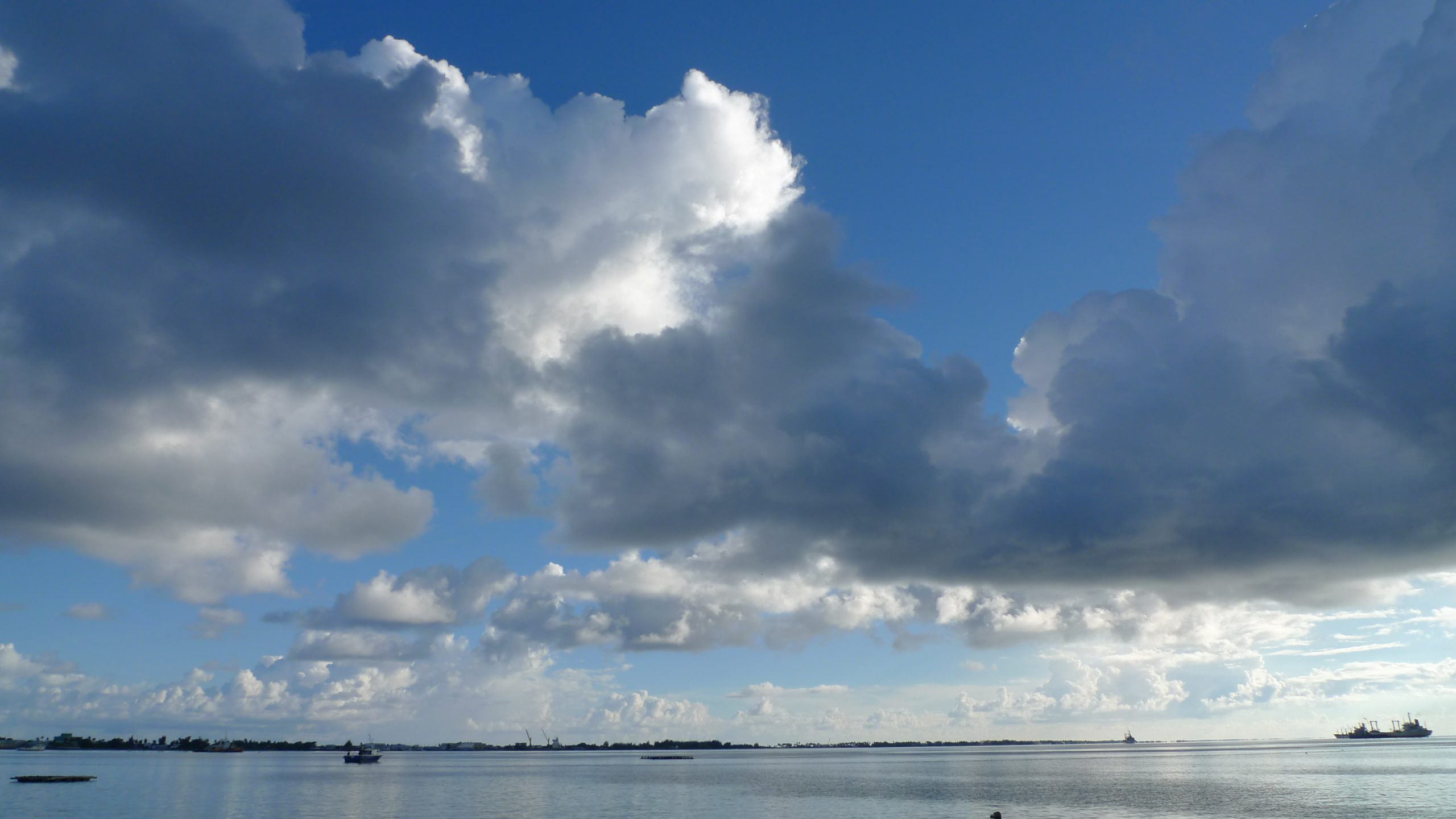
馬紹爾群島是世界遠洋漁業重要基地之一。2009年,於首都馬久羅。(呂憶君攝影) The Marshall Islands are a major hub for the global deep-sea fishing industry. (Majuro, 2009. Photo: Lu Yi-chun)
Why Build Canoes? Waan Aelõñ in Majel Canoe-building Program of the Marshall Islands
Text and photos: By Lu Yi-chun The Marshall Islands consist of two chains of islands and coral atolls, the eastern Ratak and western Ralik. The US has strongly influenced the nation politically, economically, and socially since the arrival of American forces during World War II (1939-1945), the air and maritime transportation industries in the capital of Majuro serving as a clear example. United Airlines (A US carrier) dominates the flight paths between Guam, Micronesia, the Marshall Islands, and Hawai‘i. Fishing boats and vessels from all over the world, transporting such everyday goods as processed coconut products and tuna, dock in the capital, and there are also terminals for domestic passenger traffic. American company Matson Inc.’s cargo shipping operations reach from the US west coast to Hawai‘i, the Marshall Islands, the South Pacific, and China, covering the majority of the Pacific. The Marshall Islands are an important hub for air and maritime shipping in the region, facilitating the movement of people and goods. With the convenience of modern transportation, the locals no longer need to make their living off fishing, so I could not help but wonder why they still build outrigger canoes. From the nation’s post-WWII reconstruction to its independence (1986), many of its people moved to the US in search of more means to make a living, leading to a crisis in the transmission of traditional navigation and canoe-building knowledge. But a canoe-building program in the capital, called Waan Aelõñ in Majel (WAM; literally: “Canoes of the Marshall Islands”), shows there are people who wish to preserve and transmit such cultural assets and who are taking practical measures to identify with their culture. The program was initiated in the late 1990s as an NGO and has since focused on teaching the younger generation to build canoes and about the traditional maritime culture. Participants of all genders learn to fell trees, build boats, navigate, and read the stars and currents to stay aware of direction, that is, the wisdom their ancestors accumulated over the ages by interacting with the sea. After the locals had dedicated years of effort to cultural revitalization, scientists from overseas became interested in the traditional navigation skills of the Marshallese, producing research that has been made known publicly. Alele Museum is located in the capital (an alele is a traditional basket made from pandanus leaves to hold valuable possessions). At the museum, WAM displays drawings of traditional canoes, navigation maps, and canoe models. Traditional canoe-building and navigation are being viewed with increasing importance, not only in the Marshall Islands but even as far away as Arkansas, where some Marshallese descendants live. On the last Friday of every September, during the weeklong event Manit, the Marshallese get together and celebrate their culture by sailing traditional canoes, feasting, weaving, singing, and dancing. As society and the climate rapidly change, these celebrations serve as a guide to the Marshallese wherever they are and remind them that they hail from a radiant cluster of islands. Author: Lu Yi-chun Assistant researcher at the National Museum of Prehistory, Taiwan, and lover of clouds, mountains, the ocean, and singing.
為何要造舟?馬紹爾群島WAM造舟計畫
文、圖:呂憶君 馬紹爾群島(Marshall Islands)由東方的日出列島(Ratak Chain)和西方的日落列島(Ralik Chain)兩串島鍊串起猶如繁星的珊瑚礁島群。第二次世界大戰(1939-1945) 美國勢力進入當地後,在政治、經濟、社會文化各層面影響至今。首都馬久羅(Majuro)的航空、船運運輸系統就是顯著的例子。美國聯合航空掌握了關島、密克羅尼西亞聯邦、馬紹爾群島至夏威夷的飛行航線。首都有國際船貨碼頭停靠各國遠洋漁船、運輸民生物資、椰子加工品和鮪魚,以及國內載客商用碼頭。美國美森集團的貨櫃船運範圍,更是擴及美國西岸、夏威夷、馬紹爾群島、南太平洋、中國廣大的泛太平洋地區。馬紹爾群島成為此區航空與船運系統的重要節點之一,向外開展的交通運輸系統更促進了人和物資的流動。 如今在現代交通便利又不需出海捕魚滿足生存所需的景況之下,不禁想問馬紹爾人為何要造舟?而且,造的是傳統獨木舟(outrigger canoe)。從戰後重建到成為獨立國家,不少馬紹爾人移居到美國尋求更多的生存發展機會,卻也面臨傳統航海和造舟知識傳承的危機。從首都的造舟計畫(Waan Aelõñ in Majel,簡稱WAM),看到了對於文化資產保存與傳承的堅持,以及自身文化認同的實踐。這造舟計畫是一個成立於1990年代末期的非政府組織,近30年推動至今著重在年輕世代的造舟培力與航海文化傳承。不限性別的學員培訓內容涵蓋伐木、造船、航海等技藝,學習如何在海洋中觀察星象、洋流等判斷航行方向,以及祖先與海洋互動累積的生命智慧。 在多年來努力地文化復振之下,引起國際間科學家對於馬紹爾傳統航海知識的好奇和興趣,這些在地與科學知識辯證的研究成果,也陸續對外發表流通。位於首都的Alele博物館,alele為馬紹爾島民以林投葉編製的精緻編籃,用於保存貴重物品。造舟計畫在此展出傳統獨木舟繪圖、航海圖與船隻模型等。由於造舟、航海文化傳承逐漸受到重視,如今無論在馬紹爾群島或是移居的美國阿肯色州等地。馬紹爾人在每年9月最後一個星期五的Manit(文化和慣習)日聚集,以航行傳統獨木舟、共食、編織、吟唱、舞蹈等方式傳承文化。在社會快速變遷和極端氣候洶湧而至的浪潮下,這些行動似乎指引著各地的馬紹爾人,不斷述說著他們是來自猶如繁星的美麗島嶼。 作者∣呂憶君 國立臺灣史前文化博物館助理研究員 喜歡看雲、山、海,聽海唱歌。
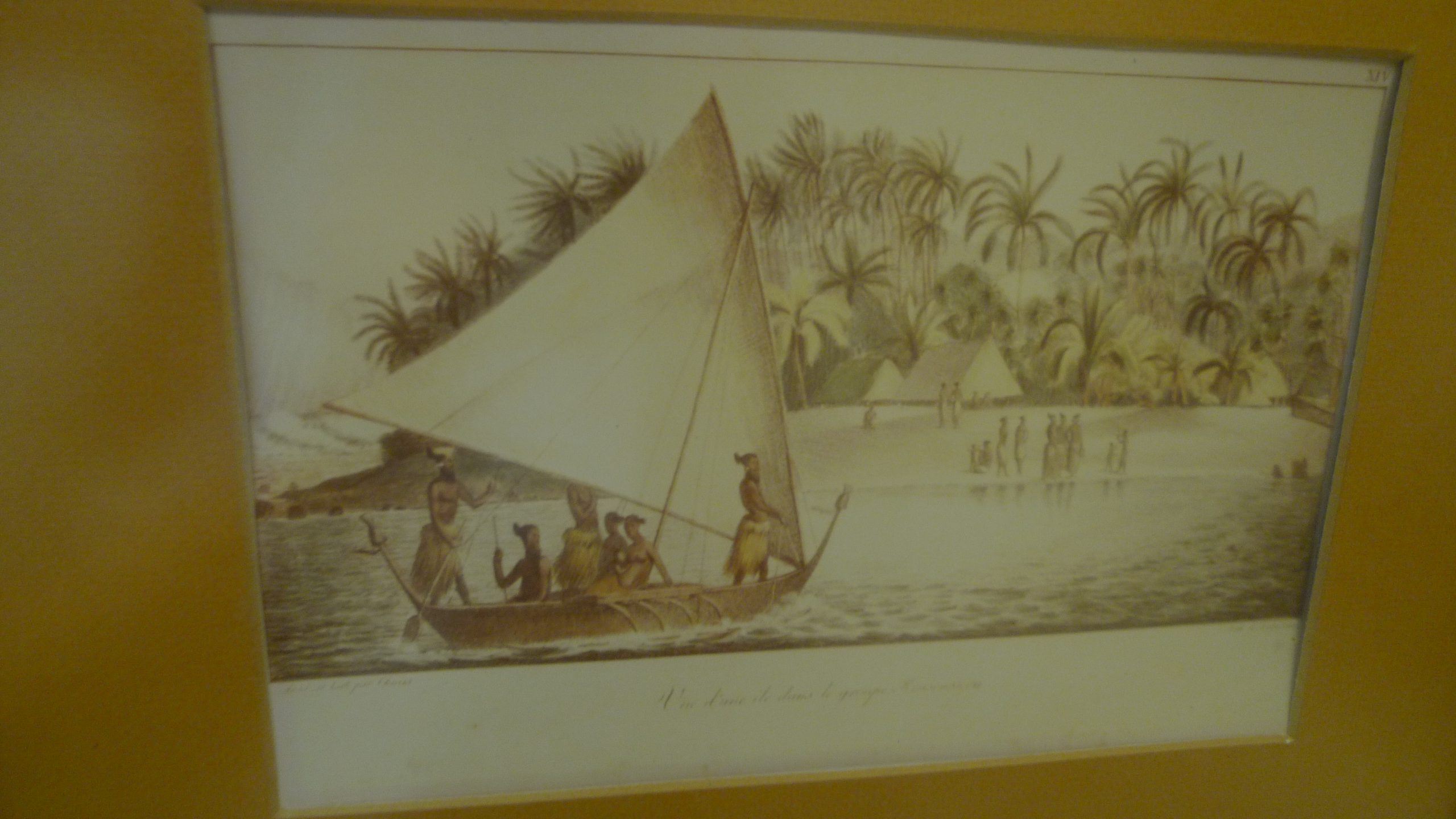
航行傳統獨木舟的馬紹爾人。 2009年,於Alele博物館。(呂憶君攝影) Marshallese people sailing a traditional canoe. (Alele Museum, 2009. Photo: Lu Yi-chun)
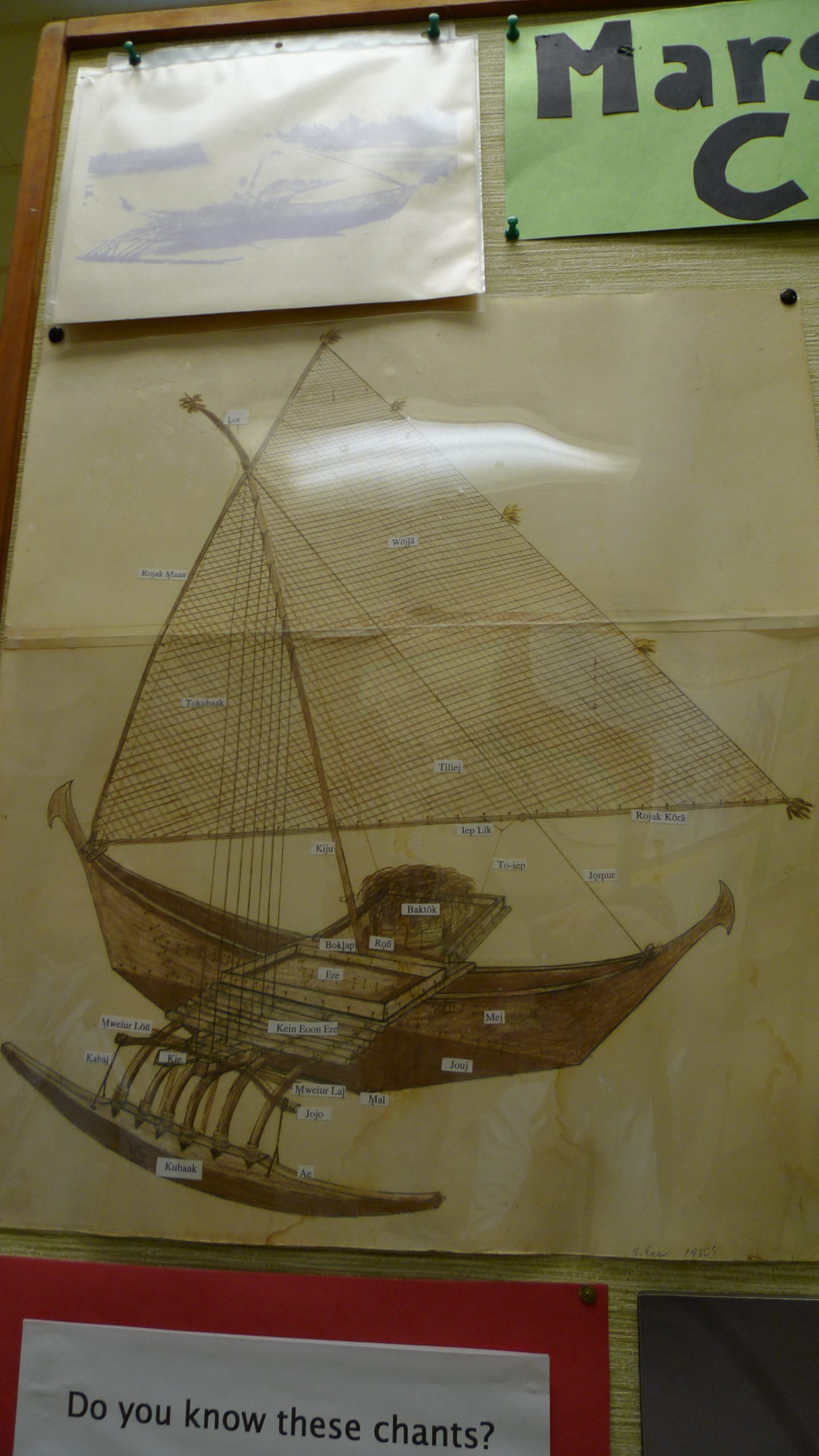
傳統獨木舟繪圖,以馬紹爾語標示出船隻的各部位名稱。2009年,於Alele博物館。(呂憶君攝影)Diagram of a traditional canoe with labels for each of the components in Marshallese. (Alele Museum, 2009. Photo: Lu Yi-chun)
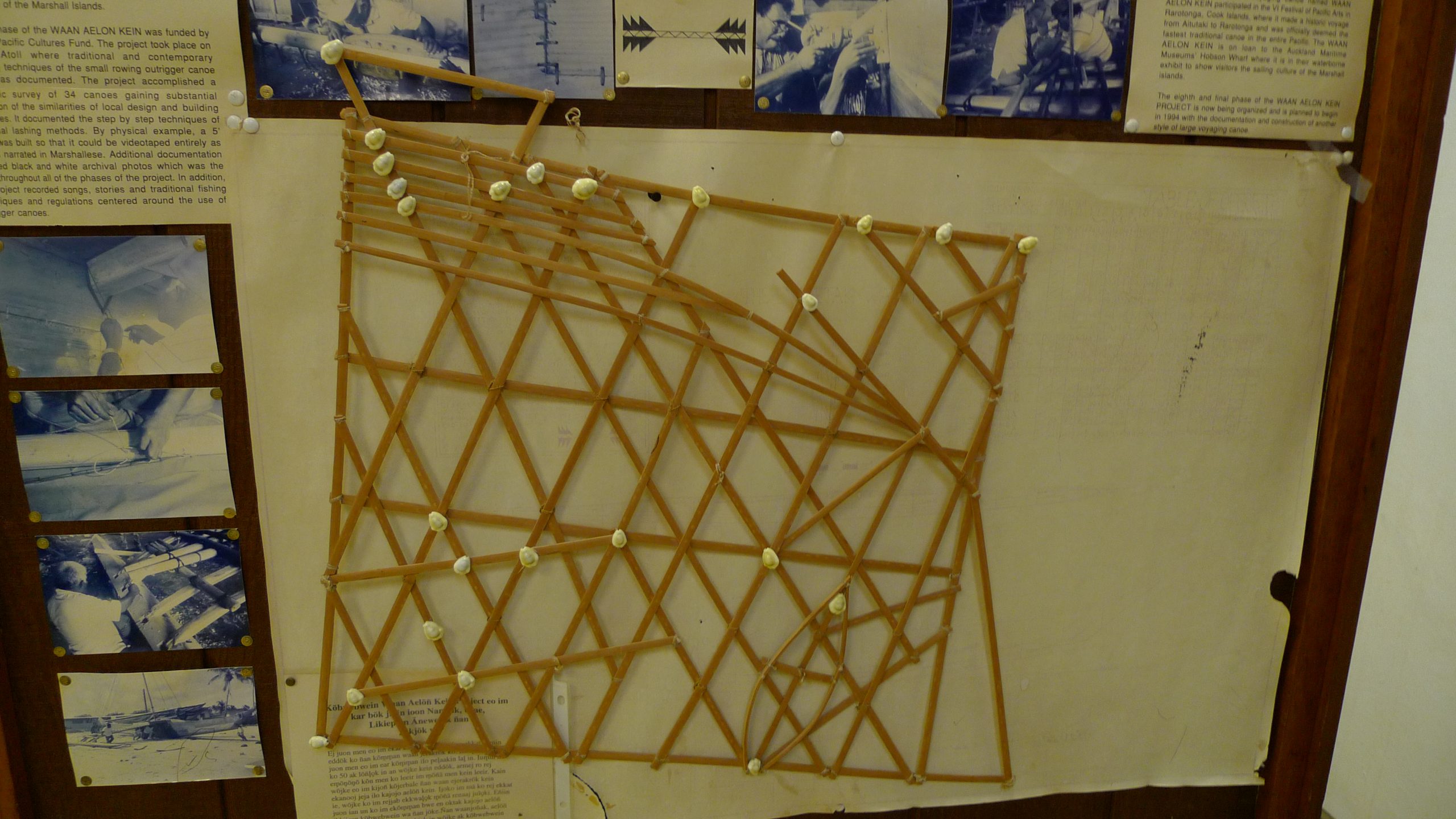
航海圖(stick chart)。2009年,於Alele博物館。(呂憶君攝影)A stick chart, which is a traditional navigational tool. (Alele Museum, 2009. Photo: Lu Yi-chun)
Issue No. 2
My Life by the Sea
By Valdis Gauss Assistant Professor, Dept. of English, National Taitung University Growing up in southern California, the ocean has always been part of my life. During the months when my mom was pregnant with me, she regularly swam in the ocean. In fact, by the time I was a few months old, I had learned how to swim. From the farm where I grew up in the foothills of Santa Barbara, there are panoramic views of the island-studded ocean which, in many ways, are remarkably similar to vistas in Taitung. When I moved to Taiwan in 2008, I didn’t know what to expect. I found a job in Taichung and began to experience life in the metropolis. I thought that I had everything I needed there until I took a trip around the island and encountered peaceful Taitung. I couldn’t believe how different life felt in Taitung compared to the rest of fast-paced Taiwan. When you first arrive in Taitung, everything slows down. You immediately notice that the air is sweeter, the breeze is surprisingly cooler, the mountains are greener and the sea is more welcoming. On that first day in Taitung in 2008, I set a goal for myself to relocate to Taitung. But it wasn’t until 2017, when I realized my nearly decade-long aspiration to find work here. I happily left Taichung and never looked back. People who know me have heard me say again and again that “Taitung is paradise.” I often say this because it’s true. Taitung is paradise. See? I said it again. Sometimes, I sing to myself about it while riding on my scooter to the university. I cannot speak for other people; however, as for myself, I need to feel connected to nature. It’s not just about seeing beautiful views. It's about breathing, touching, hearing and even tasting nature. I’ve found that nothing makes me feel more physically connected to nature than being submersed in Taitung’s waters. To this end, I have explored all of the rivers and beaches around Taitung and I will continue to explore them. This morning for example, I went river tracing at Mulrawnga (桑樹溪) where I saw and heard the sounds of butterflies, lizards, shrimp, fish, crabs, birds, frogs, dragon flies and a variety of colorful insects and spiders. Eventually, I arrived at an impressive and serene waterfall that is about 8 meters tall. The roar of the waterfall was deafening and my sunglasses quickly became covered in a fine mist of spray. I loved every moment of it and I will return there again soon. However, I spend the majority of my free time interacting with the sea. This cannot be accomplished by simply staying in your car and enjoying the view from a parking lot. In order to truly interact with the sea, you need to get much more “up close and personal.” Over 90% of our experiences are dictated by our impressions of what we see with our eyes. However, vision should be complemented by the senses of hearing, touching, smelling and (to some extent) tasting the sea which can only be done by getting out of the manufactured environment of your air-conditioned car and getting onto the sand and into the sea. Looking out across the horizon, to the north there is a view of Dulan. To the east one sees Green Island and occasionally, on very clear days, Orchid island. Finally, to the south, past Taimali and Dawu, sometimes I catch a glimpse of Chufongbi (出風鼻) in Pingtung. Flying over the waves, flocks of migratory birds are a common sight at this time of year and on occasion, I even see flying fish. The sounds I encounter along Taitung’s coast vary depending on the beach. Some beaches are quite close to Highway 11. So inevitably, the sound of traffic can be heard. However, many beaches are secluded enough that the “ming-ming” chirping of the cicadas takes over, especially along the tree line. Birds can be heard calling as well. Depending on water conditions, the sounds of the waves can be deafening or nearly nonexistent. Typically however, the crashing of waves pleasantly fills the air and lulls the soul to a peaceful state. As the waves crash upon the stony shore, ocean spray is caught up by the wind and carried to my lips. Thereby, a visit to the beach yields the delightful taste of the sea. But, nothing is better than getting into the water and feeling the ocean push and pull your body in every direction imaginable. For me, it’s a kind of massage from nature. The effect on the muscles can be felt immediately and for those suffering from skin conditions, I can attest to the healing power of the ocean’s water. Bathing in Taitung’s sea can help heal your body and your soul. I am living proof of that. If you haven’t visited Taitung’s beaches recently, do yourself a favor. Come to Taitung, experience the sea and enjoy the peace it brings your soul.
從加州到臺東,我的海海人生
臺東大學英美系高加州/文 臺東大學英美系曾瑞華/譯 因為從小在南加州長大,海洋一直是我生活中的一部分。可能因為我母親在懷我的幾個月裡,經常在海裡游泳,我幾個月大時就學會了游泳。我在聖塔芭芭拉山麓的農場長大,在那裡可以看到有著島嶼點綴的海洋全景。那景象,與臺東的海景神似,也讓我在乍見臺東的第一眼時,有一種似曾相識的歸屬感。 2008年當我初次來到臺灣,對這個新環境並無任何期待。最初在臺中找到工作,體驗了幾年都市生活,當時原以為在那裡已經什麼都有了,直到我在環島旅行時來到寧靜的臺東,才知道在臺灣原來還有更值得嚮往的地方。 臺東的生活節奏,與臺灣其他的地方截然不同。當你一進入臺東,就會發現一切都突然放慢了。空氣更甜美,微風更沁人心脾,山更綠,海也更迎人。 從2008年第一次遇見臺東,我就下定決心,一定要搬到臺東。而這個願望,也在2017年終於實現。我找到這裡的工作,高興地離開了臺中,從此也沒再回頭過。 認識我的人都聽過我一再地說「臺東是天堂」。我常說這句話,因為我真的就這麼想。臺東就是天堂。看吧?我又說了一遍。有時候,我甚至在騎著摩托車去大學的路上,就這麼大聲地對自己高唱。 我不能替其他人發言,但對我來說,我是一個需要與大自然連結的人。這不僅僅是看看宜人的景色,也包括呼吸、觸摸、聆聽,甚至用味覺品嚐大自然。我發現,沒有什麼能比浸泡在臺東的水域裡更讓我感覺到與大自然的肌膚之親了。 為此,我探索了臺東周圍所有的河流和海灘,未來也將持續。比如,今天早晨,我就沿著桑樹溪溯溪,看到了蝴蝶、蜥蜴、蝦、魚、螃蟹、鳥、青蛙、蜻蜓和各種色彩繽紛的昆蟲和蜘蛛。最後,我來到一個壯觀而寧靜的瀑布,大約有8米高。瀑布的轟鳴聲震耳欲聾,我的太陽眼鏡也很快就被細霧浸濕了。我愛這裡的每一刻,我也一定很快會再來。 不過,我更多的時間是與海互動的。這可不僅是坐在車裡,或從停車場欣賞海景。要真正地與海互動,你需要更「近距離且親密」的肌膚之親。 一般人超過百分之九十的感受來自視覺。但視覺應該與聽覺、觸覺、嗅覺、(在某種程度上)還有味覺相輔相成。而這些,是只有在離開你那配有空調的車廂人工環境,走上沙灘,並走進大海中時,才能實現的。 極目遠望,北方是都蘭,往東可見綠島,偶爾在非常晴朗的日子裡,還可看到蘭嶼映入眼簾,往南越過臺東的太麻里和大武,有時則可見屏東的出風鼻遙遙呼應。在候鳥成群飛越大海的季節裡,間而出現的,有時還有歡樂嬉戲的飛魚。 我在臺東海岸可以聽到的聲音因海灘地點而異。有些海灘靠近十一號公路,所以交通嘈雜之聲在所難免。在許多相對隱蔽的海灘中,樹木間甚至可聽到蟬聲唧唧,鳥鳴啾啾。隨著水域條件不同,海浪的聲音有時震耳欲聾,有時則幾乎寂靜無聲。不過,大致來說,只要是在海邊,總能聽到海浪拍打的聲音愉悅地填滿空氣,撫慰靈魂,帶給人平和寧靜的滿足感。而當海浪拍打在礁石岸邊,海水的細沫隨風飄到我的嘴唇上時,海灘一遊就成了色味俱全的美之饗宴。 但當然,再也沒有什麼身體的接觸能比泡在海中,感受海浪將身體往各種可能的方向推拉彈壓的動感更奇妙了。對我來說,這是來自大自然的按摩。這動力,對肌肉的效果可以立即感受,對患有皮膚病的人來說,我可以證明海水的神奇療效。 臺東的海水沐浴可以幫助你治癒身體,洗滌靈魂。我就是個活生生的見證。如果你最近沒有去過臺東的海灘,請給自己一個機會。來臺東,體驗大海,享受它帶來的平靜吧。
Issue No. 1
The Oceanic Origins of Taiwan’s Austronesian Tribes
By Valdis Gauss Assistant Professor, Dept. of English, National Taitung University The ocean is among the most prominent natural features memorialized in the sacred oral histories of Taiwan’s tribal peoples. Echoes of the great deluge that consumed the whole Earth followed by tales of voyages around the island and across the sea cast the ocean as a giver of life, offeror of opportunity and as a grave. However, the earliest Formosan myths featuring the ocean concern man’s origins on the island of Taiwan. According to some oral histories narrated by Taiwan’s Amis, Bunun, Kavalan, Ketagalan, Liulang, Kulon, Makatao, Paiwan, Puyuma, Rukai, Saisiyat, Sakizaya, Siraya, Trobiawan (Basay), Tao/Yami and Truku tribes, the ancestors of Taiwan’s aboriginal tribes can trace their origins to locations overseas. These drift origin myths, as I refer to them, differ from other origin myths found throughout Taiwan’s Austronesian tribes. The majority of the Formosan origin myths depict the ancestors as beings who were created by the gods or spontaneously emerged out of objects such as stones, trees, feces, bamboo, smoke and even from underground. Drift origin myths indicate that the ancestors first appeared on lands far away and that these lands were abandoned and that residence was subsequently taken up on Taiwan. The cultural importance of the ocean cannot be overstated with regards to all Austronesian island-dwelling tribes and Taiwan’s aboriginal cultures are no exception. Within the ocean’s embrace, the island and all of its inhabitants can attribute much of their benefit and suffering to the influence of the ocean. In fact, with regards to nature, it could be argued that the role of the ocean over life on the island is only surpassed in importance by the sun. Bearing this in mind, it is unsurprising that certain villages within the majority of the tribes attribute the origins of the ancestors to seafarers who cross the ocean prior to arriving on Taiwan. To be clear, multiple divergent oral histories are represented within all of Taiwan’s tribes, especially with regards to the origins of mankind. Over 250 texts coming from 22 of Taiwan’s tribes are known and will be referenced in detail in my forthcoming book titled The Formosan Primary Anthropogenic Myths, Genesis and the Creation of Man. Nevertheless, for our purposes, let us consider a selection of Austronesian Taiwan’s nearly 50 drift origin myths that concern man’s origins and the ocean. My favorite drift origin myth comes from the Riru Amis tribe. According to Riru elders, the ancestors traveled to the island of Taiwan from an island to the east. In fact, this “island to the east” motif is extremely prevalent and will be discussed later. However, rather than arriving on a raft or sailing in a boat, it is said that the ancestors rode to Taiwan on the back of a giant tortoise! Sadly, little more than this outline was published in J. W. Davidson’s The Island of Formosa Past and Present in 1903. But this fragment is nevertheless extremely intriguing and I intend to follow up on it in the future. According to Makatao tradition, the ancestors were driven by a terrible storm to western Taiwan from Vietnam. Upon their arrival, all of their men were killed by Paiwan warriors and the women were kept as wives. The children of these Vietnamese wives and Paiwan men were the first ancestors of the Makatao people. Across the sea to the west, the family members in Vietnam dispatched Gray-Faced Buzzards to check in on the long-lost women as they migrated north each spring. Since the Gray-Faced Buzzards function as beneficent messengers between the Vietnamese homeland and southwestern Taiwan’s Makatao, these raptors have enjoyed the protection of the Makatao people since the tribe’s earliest origins. While some tribes, such as the Bunun, have only one or two drift origin myths, the majority of the Kavalan myths tell of overseas origins. It is said that the ancestors left their homeland on an island to the east, sometimes identified as Sanasay, due to overpopulation and were driven by a storm to the east coast of Taiwan. A deal of variation regarding the number of survivors and boats which they used to come to Taiwan is exhibited among different villages. As few as two siblings on a single boat and as many survivors as were needed to pilot five or more boats are said to have crossed the seas in their quest to reach Taiwan, depending on the source. The motif of being forced to abandon the original homeland due to external pressures, such as overpopulation, are also found amongst the Ketagalan oral histories. According to Ketagalan sources, the ancestors fled from Sanasay in order to escape a terrible and deadly monster known as Sansiyao. Unfortunately, little else is known and only this fragment remains regarding the monster. A different Ketagalan drift origin myth tells of a hopelessly leprous girl. The girl’s father, a holy man, begged the gods to send a healer who could save his daughter’s life. In return, the holy man swore to the gods that he would give his daughter in marriage to the one who cured her. To everyone’s astonishment, a dog came to her bedside and began licking her leprous wounds and she was cured! Bound by his promise to the gods, the holy man gave his daughter to the dog and blessed them in marriage. However, this situation was so embarrassing and taboo that the holy man could not bear to allow the couple to remain on their island. So, he cast them adrift on the ocean. After a while, their craft drifted to Taiwan and their children became the ancestors of the Ketagalan tribe. Similar to the first Ketagalan account is the Kunaljau Paiwan history of the ancestors who lived on an island called Marairai (a possible reference to Sanasay) until the island was infested with ghosts and demons. Though the evil spirits could be held back with fire, the tribe was forced to abandon Marairai and thus traveled overseas landing on Taiwan’s west coast in Kaohsiung where their descendants became the ancestors of the Kunaljau tribe. Puyuma myths tell of an ancestor named Nunur who was carried across the sea to Taiwan. Being all alone, it is said that Nunur stuck his walking stick into the ground and it began to grow tall. In a story reminiscent of the Jack and the Beanstalk epic that has its roots in the Bronze Age 5,000 years ago, Nunur’s walking stick grew into a giant bamboo. Then, it promptly burst open and a brother and sister stepped out of it. Some Puyuma villages attribute their lineage to these bamboo-born siblings. However, the same account says that, after teaching these bamboo-born siblings how to raise children, the first ancestor, Nunur transformed into a stone. Plot twist, that stone later burst open and the ancestors of the other tribes are said to have emerged from it. This is one of the origins of the bamboo-born and stone-born Puyuma myths. While by no means unprecedented, the Puyuma myth of Nunur is unusual because it specifically chronicles the origins of other linguistically unrelated tribes such as the Amis and Paiwan. According to Taiwan’s Ministry of Culture, the Tehlumake Rukai (a possible variation in spelling for Taromak) believe that the first ancestors also drifted over the sea and landed somewhere on Taiwan’s east coast. However, most Rukai villages attribute their origins to creation or genesis mechanisms. Likewise, the equally vague account of one Saisiyat village claims that the ancestors drifted over the seas and landed on Taiwan’s northwestern coast in modern-day Hsinchu. However, their point of origin has not been preserved within this fragment. While variation exists amongst Sakizaya sources, Ciwidian Sakizaya people claim that the first ancestors on Taiwan were siblings who drifted to Taiwan from Sanasay. Siraya people also tell of overseas origins. It is said that while drifting in the sea the ancestors were carried to Taiwan by a terrible storm which they barely survived. However, while being tossed back and forth by the terrible waves, it is said that the ancestors received a sign from god, word’s written on their sails, that harkened their arrival on Taiwan’s southwestern coast. This vision was interpreted as an oracle and they founded their tribe on Taiwan at that time. Trobiawan drift origin myths also accredit the island known as Sanasay to their point of origin. Like Kavalan sources, Trobiawan histories indicate that Sanasay was abandoned due to overpopulation. It is said that after departing from Sanasay, one boat made landfall on Taiwan’s northern coast and the survivors became the ancestors of the Trobiawan while another boat landed slightly to the south in the region of modern-day Yilan and those survivors became the ancestors of the Kavalan tribe. One of the Truku histories bears a marked similarity to the Ketagalan tale of the leprous daughter. This Truku account revolves around a deformed girl, who, according to tradition, should have been killed because of her deformity. Ashamed but unwilling to kill her, her father the chief placed her into a boat with a dog and provisions and cast them adrift. It is said that upon arriving on Taiwan, the dog provided for the deformed girl by protecting her and giving her food. While the dog provided for the girl, she did nothing for the dog, so the dog threatened to abandon her. Realizing how desperately she needed the dog, the girl instructed it to wait for a girl with a tattooed face who the dog could marry. Then the deformed girl disappeared, tattooed her own face and returned to marry the dog. This union between the banished deformed girl and the dog marks the origins of the Truku tribe. Yami/Tao drift origin myths say that the ancestors of the tribe arrived on Orchid Island by drifting overseas in sealed chests. How did they get into sealed chests? Prior to drifting to Orchid Island, the ancestors lived on an Edenic island where they had everything they needed. There was only one rule, they could not eat fruit from a certain tree. Much like the biblical Eve, their curiosity got the best of them they ate the forbidden fruit. This caused them to become pregnant and lose the power of speech. Then their father placed them in chests and cast them adrift on the sea, never to return again. After landing on Orchid Island and giving birth to their children, they regained the power of speech and became the ancestors of the Yami/Tao. Sanasay, the coconut tree-covered island to the east, is considered the point of origin in numerous Amis, Kavalan, Ketagalan, Liulang, Paiwan, Sakizaya and Trobiawan drift origin myths. One can only wonder if, truly, all of these tribes had origins on Sanasay. The likelihood of this scenario seems doubtful given the fact that these tribes all have mutually unintelligible Formosan mother tongues. Nevertheless, the Sanasay origin is possible. In contrast to the point of origin, most tribes took efforts to preserve the memory and venerate the location at which the ancestors were said to have first landed on Taiwan. These locations are situated all around the island and are not concentrated in a single locale. Early Chinese squatters who dared enter these sacred places on Puyuma territory near modern-day Taitung city, met early deaths which was said to be punishment from the spirits. The animals featured in Amis (tortoise), Makatao (grey-faced buzzard), Ketagalan (dog) and Truku (dog) drift origin myths are also intriguing. In Amis, Ketagalan and Truku traditions, the animals were active participants, without whose contributions, the ancestors would not have survived. These exciting myths and many other ocean-related mysteries regarding the origins of Taiwan’s Austronesian tribes can be revealed from the sacred oral histories of Taiwan’s earliest inhabitants. References: Cauquelin, J. (2004). The Aborigines of Taiwan. The Puyuma: from headhunting to the modern world. Routledge. New York, USA. Davidson, J. W. (1903). The Island of Formosa Past and Present. Macmillan & Co. London and New York. Ho, T. J. (1967). A Comparative Study of Myths and Legends of Formosan Aborigines. (PhD Dissertation). Indiana University. USA Gauss, A. V. (2022). The Formosan Great Flood Myths: An Analysis of the Oral Traditions of Ancient Taiwan. Edwin Mellen Press. Lin, X. H. (1996). Research on Makadao Language and Music in the Pingtung Area. Pintung County Cultural Center Publications. ROC. Retrieved from https://taiwanebook.ncl.edu.tw/zh-tw/book/CPTHG-9910002179/reader Liu, B. X. (1980). The Legend of the Ancestors of the Yami Iratay Tribe. Institute of Ethnology, Academia Sinica. Taipei, ROC. (Mandarin) Mabuchi, T. (1974). Tales Concerning the Origin of Grains in the Insular Area of Eastern and Southeastern Asia. In Lou Tsu-k’uang & W. Eberhard (Eds.), Asian Folklore and Social Life Monographs Vol. 59 (pp. 65 - 160). The Orient Cultural Service. Taipei, ROC. (Original work published 1964). MOC-Paiwan (n.d.). A Store of Myths. Ministry of Culture. Retrieved October 18, 2023, from https://ticeda.moc.gov.tw/home/en-us/PaiwanShenhua MOC-Rukai (n.d.). A Store of Myths. Ministry of Culture. Republic of China. Retrieved October 18, 2023, from https://ticeda.moc.gov.tw/home/en-us/RukaiShenhua Pu, C. C. (2012). Literary History of Taiwanese Indigenous Peoples (Volume I). Le Jin Books Ltd. Taipei, ROC. Shimizu, J. (1998). Kvalan Myths and Traditions as Recorded in the Original Language. Monograph Series of Source Materials on Taiwan Aborigines 4. Institute of Linguistics Academia Sinica, Taipei, ROC. Translated by Erika Kaneko. Tien, Z. Y. (2013). Saisiyat Myths and Legends. Morning Star Press. Taichung, ROC. (Mandarin) Tenn, N. I. (2017). Toward a Siraya-based Taiwanese Feminism. (PhD Dissertation). National Taiwan Normal University, ROC. Tsai, L. H. (2005). A Comparative Study of Sakizaya and Amis in Hualien by Mitochondrial DNA Sequences Analysis. Master’s Dissertation. Tzu Chi University. Zhan, S. J. (1995). The Origin, Distribution and Migration of the Kavalan Tribe in the Yilan Plain. In Pan Yinghai and Zhan Sujuan (Eds.), Pingpu Research Papers. p. 41-76. Institute of Taiwan History, Academia Sinica. Taipei, ROC.
來自泱泱大海的南島子孫: 臺灣南島語族部落的海洋起源
臺東大學英美系高加州/文 臺東大學英美系曾瑞華/譯 The Oceanic Origins of Taiwan’s Austronesian Tribes By Valdis Gauss Assistant Professor, Dept. of English, National Taitung University For the original article in English, please scan the QR Code. 在臺灣部落民族透過口耳流傳的神聖記憶中,海洋是最受到重視的大自然。從許多有關洪水吞噬大地的島嶼和跨海傳說可知,海洋總是被刻畫為生命的贈予者,帶給人們同樣的機會和對生命的挑戰。然而,這些最早圍繞著海洋主題的臺灣原住民神話,更重要的,是傳遞了祖先們如何飄洋過海落腳此地的民族起源。 根據一些由臺灣阿美族、布農族、噶瑪蘭族、凱達格蘭族、雷朗族、庫倫族、馬卡道族、排灣族、卑南族、魯凱族、賽夏族、撒奇萊雅族、西拉雅族、哆囉美遠族(巴賽族)、達悟/雅美族和太魯閣族的口傳歷史,臺灣原住民的祖先可追溯自臺灣海外。這些我所稱的「漂移起源」神話,與臺灣南島語族部落其他起源神話的不同之處在於,大多數臺灣起源神話所描繪的祖先,不是神明創造出來的,就是從大自然物,如石頭、樹木、糞便、竹子、煙霧,或甚至是從地底下冒出來的,而漂移起源的神話則指出,這些祖先們最早住在遠方,後來放棄所居,最後遷徙臺灣,生根於此。 對所有的南島語族島嶼部落來說,海洋文化的重要性是不可言喻的,臺灣原住民文化也不例外。在海洋的懷抱中,這個島嶼及其所有居民的福祉與苦難可說都來自海洋。事實上,從大自然的角度來看,海洋的重要性及其對島嶼生活的影響,可說僅次於太陽。從這一點來說,有些部落的許多村莊會將他們的祖先追溯至遠渡重洋來臺定居的航海者,當然也就不意外了。值得一提的是,在台灣所有的部落中,都存在著多種不同的口述歷史,特別是在人類的起源方面。我在即將出版的書籍《臺灣重要的人類起源神話、創世和人類的創造》中,就詳細地介紹了來自臺灣22個部落、超過250個文本的起源故事。在此,我們就從中挑選近50則與漂移起源有關的神話,來談談人類起源和海洋的密切關聯。 我最喜歡的漂移起源神話來自阿美族部落。據部落的長老說,他們的祖先是從臺灣以東的島嶼跨海來臺的。事實上,這個「來自東方之島」的說法非常普遍,容後再敘。有趣的是,據說這些飄洋過海而來的祖先並非乘著筏子船隻,而是騎在巨大的海龜背上來到臺灣的!只可惜,這個說法在戴維森出版於1903年的《福爾摩沙的過去與現在》中,只是點到為止。不過,光是這樣的斷簡殘編,也足已令我為之神往,希望未來可以繼續深入。 根據馬卡道族的傳統,他們的祖先則是被一場可怕的暴風雨從越南驅趕到臺灣西部的。當他們到達時,所有的男人都被排灣族戰士殺死,而婦女則被留作妻子。這些越南妻子和排灣男人的子女即是馬卡道族最早的祖先。每年春天,來自越南的家人們總是會趁著灰臉鵟鷹北徙之際,派這些候鳥來到西岸問候失散已久的婦女們。由於這些灰臉鵟鷹,對在越南家鄉和臺灣西南部的馬卡道族人來說,都是象徵吉祥的使者,從部落最早的起源以來,就一直受到馬卡道族人的保護。 雖然有些部落,如布農族,只有一兩個漂移起源的神話,但噶瑪蘭族大多數的起源神話都訴說著從海而來的故事。據說他們的祖先,也就是傳說中的薩那賽族,即來自東部外海。他們因人口過剩而離開家鄉,然後被一場暴風雨驅趕到臺灣東海岸。關於上岸後的倖存者以及船隻數量,不同的來源有不同的說法,少則只有兩手足一艘船,多則有更多倖存者及五艘以上的船隻渡海來臺。 在凱達格蘭的口述歷史中,也有因外在壓力,例如人口過剩問題,而被迫漂流來臺的起源故事。不過,根據凱達格蘭族的另一說法,他們的祖先是為了躲避一個可怕而致命的怪物山蛸,才從薩那賽逃走的。可惜的是,這個有關怪物的說法,並無再進一步的延伸。而另一個凱達格蘭的漂移起源神話,則講述了一個絕望、患有痲瘋病的女孩的故事。這個女孩的父親原是一個在部落擔任神職的長老,他乞求神明派遣一個能夠拯救他女兒生命的治療者。他並對神發誓,將把女兒嫁給任何可以治癒她的人,以作為回報。令人驚訝的是,最後竟是一隻狗來到他女兒的床邊,開始舔她的癩痢傷口,並治癒了她!受到對神承諾的約束,長老只好把女兒嫁給這隻狗,並祝福了他們的婚姻。然而,因為無法容忍難堪的尷尬和禁忌,長老最後還是要求這對夫婦離開了他們的島嶼,任其漂流海外。過了一段時間,這對夫婦的船漂流到了臺灣,他們的子女就成了凱達格蘭部落的祖先。 古那拉烏排灣族的起源歷史則與第一個凱達格蘭的故事類似。他們的祖先曾居住在一個名為馬賽賽的島嶼上(可能就是前面提到的薩那賽),直到島上充滿了鬼怪。即使他們可以用火抵擋邪靈,但部落最後還是決定放棄馬賽賽,飄洋過海,來到臺灣西岸的高雄登陸。他們的後裔最後就成了古那拉烏部落的祖先。 在卑南族的神話中,那個乘風破浪來到臺灣的祖先叫做努努爾。據說,隻身來臺的努努爾橫越海洋時,曾將手杖插入地面,然後,那根手杖便像五千年前青銅時代史詩故事《杰克和豆莖》中的豆莖,長成了一根巨竹。最後,巨竹裂開,一對兄妹從中走出來,一些卑南族的村莊便將他們的民族起源歸諸於這對從竹子走出來的兄妹。不過,同一故事也說,在教導這些從竹子生出來的兄妹如何撫養孩子後,這第一個祖先努努爾就變成了一塊石頭,並令人意想不到地再度迸開,其他部落的祖先據說就出自這個石頭。此即卑南族神話中人類出自竹子和石頭的起源故事之一。 雖然並非空前絕後,但卑南族努努爾神話的特別之處,即在於它明確地記錄了阿美族和排灣族等不同語族其他部落的民族起源。 據臺灣文化部,德魯瑪克魯凱族(可能是「達魯瑪克」的一種拼寫變體)相信他們的第一批祖先也是來自海上,最後落腳在臺灣的東部某處。然而,大多數魯凱族的村莊則將他們的起源歸因於神創或創世機制。 同樣地,根據賽夏族一個村莊同樣模糊的說法,他們的祖先也是越過海洋,落腳於今日新竹的臺灣西北海岸的。只不過,更多的起源傳說並未透過隻紙片字留傳下來。 儘管在撒奇萊雅族中流傳著各種不同的傳說,水璉撒奇萊雅族人聲稱,第一批來臺的祖先是從薩那賽漂流到臺灣的親手足。 西拉雅族人也有海洋的起源故事。據說,他們的祖先在海上漂流時遭遇了一場可怕的暴風雨,他們僥倖存活,並在隨著海浪動盪之際,自帆桅上接收到來自神的銘文,指示他們抵達臺灣的西南海岸。這個異象被當成是神諭,他們也從那個時候在臺灣建立起自己的部落。 哆囉美遠的漂移起源神話也將臺灣外海的薩那賽島當成是他們的起源地。與葛瑪蘭族的說法相似,哆囉美遠的歷史也指出,薩那賽島是因人口過剩而被放棄的。據說,當祖先們從薩那賽島出發後,有一艘船在臺灣北部海岸登陸,倖存者成為了哆囉美遠的祖先,而另一艘船稍微南行,落腳於今天的宜蘭地區,那些倖存者則成了葛瑪蘭族的祖先。 在太魯閣族中,則流傳著一個類似凱達格蘭族痲瘋女的故事。這個太魯閣族的故事圍繞著一個畸形的女孩,根據傳統,她本該因她的畸形被處死。但儘管她的父親酋長為她感到羞愧,仍不願殺死她,所以他把她和一隻狗以及生存所需放進船上,任其漂流海上。據說當他們到達臺灣,那隻狗便一直保護著畸形女孩,並提供食物。但相對於那隻狗為女孩提供食物,那女孩並沒有為狗做任何事。而當狗因此威脅著要離開女孩,那女孩意識到自己多麼需要狗時,她於是指示狗等待一個有刺青臉的女孩,並讓狗娶她為妻。然後,畸形女就消失了。再回來時,她給自己刺了刺青,並嫁給了狗。這個被放逐的畸形女和狗締結連理的故事,即是太魯閣族的起源。 在達悟族的漂移起源神話中,他們的祖先是乘著密封的箱子漂流到蘭嶼島上的。他們是怎麼進入密封的箱子的呢?在漂流到蘭嶼之前,他們的祖先們曾住在一個伊甸園般的島上,在那裡他們擁有一切所需,只是有一個規則:不能吃某棵樹上的果子。然而,就像聖經中的夏娃一樣,他們出於好奇,吃了禁果。這使他們懷孕,並失去說話的能力。他們的父親只好把他們放進箱子,丟進海中,並令其永遠不得再回來。當他們在蘭嶼島上登陸,並生下孩子後,他們恢復了說話的能力,並成了達悟族的祖先。 對許多阿美族、噶瑪蘭族、凱達格蘭族、雷朗族、排灣族、撒奇萊雅族和哆囉美遠族的部落來說,那個在東方、椰樹覆蓋的薩那賽島,一直都是漂移起源神話的起點。人們可能會想,這些部落真的都起源於薩那賽島嗎?考慮到這些部落之間並無可以溝通的臺灣原住民母語,這種情況的可能性似乎令人懷疑。不過,薩那賽島作為民族的起源,還是相當有可能的。 只不過,與起源地相比,大多數的部落都更努力保存祖先首次登陸臺灣的地點和記憶,並虔誠崇拜這些神聖之地。這些地點遍布整個島。早期敢進入今日臺東市郊卑南族領土這些神聖之地的漢民族開墾者,相傳都遭到劫殺。據說,這就是神靈懲罰的結果。 在這些漂移起源神話中,一些動物的存在,像阿美族的海龜、馬卡道族的灰臉鵟鷹、凱達格蘭族的狗,和太魯閣族的狗,也為這些傳說憑添了不少的神秘色彩。在阿美族、凱達格蘭族和太魯閣族的傳統中,動物是積極參與者,如果沒有它們的貢獻,祖先就不可能生存下來。慎終追遠臺灣最早居民的口述歷史,即可窺得這些與臺灣南島民族起源有關的有趣神話,和其他相關的海洋之謎。 參考資料請參見英文原稿。
